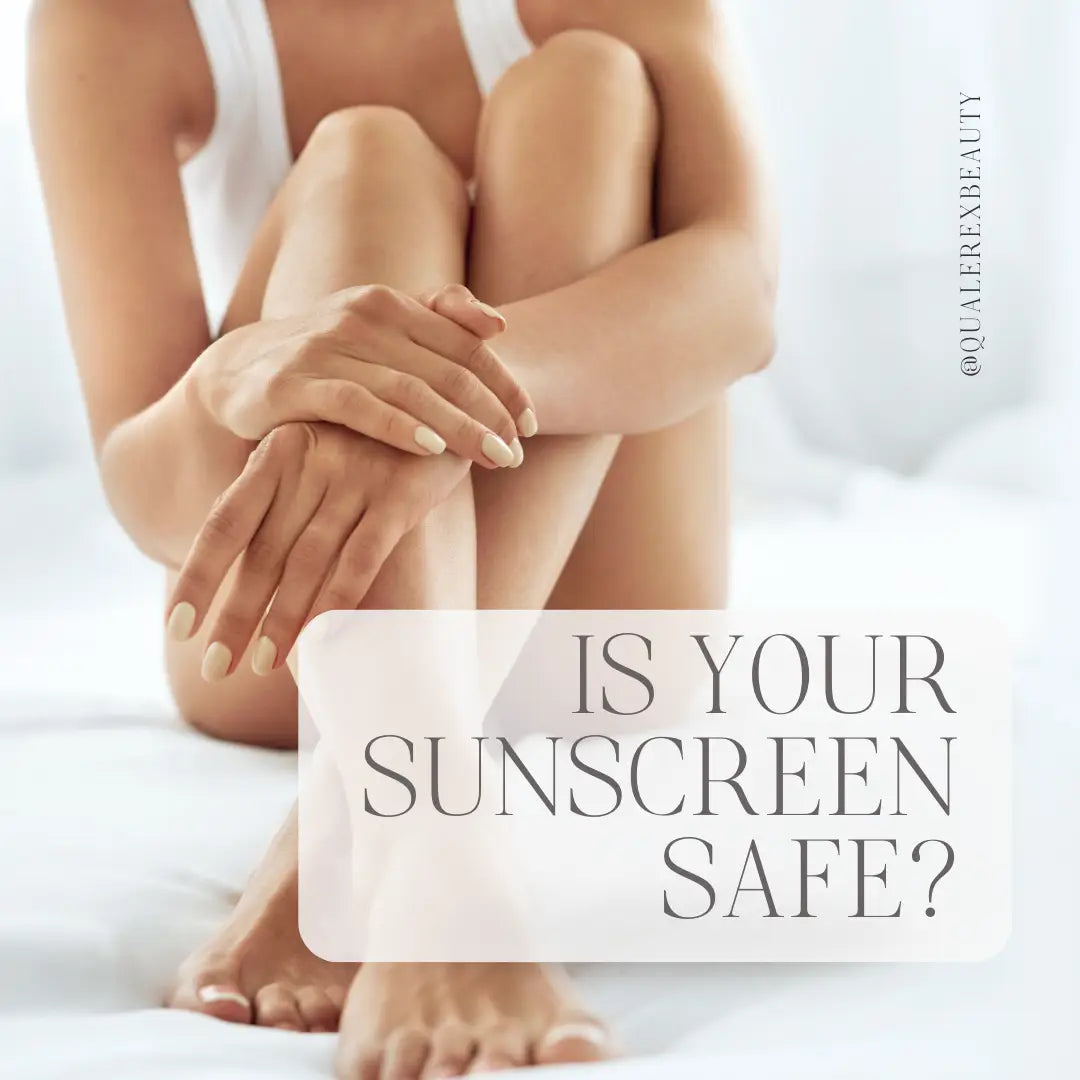Guarding your skin against photodamage is pivotal for preserving a healthy and youthful complexion. The sun's detrimental ultraviolet (UV) rays can trigger many skin issues, from premature aging to skin cancer. This article aims to shed light on the significance of shielding your skin from photodamage and proposes various strategies to achieve this goal. We'll delve into the mechanics of sunscreens and the role of antioxidants in skincare, providing you with the insights and resources to safeguard your skin from the sun's harmful rays.
The Necessity of Shielding Your Skin from Photodamage
Photodamage is a term that describes the harm inflicted on the skin through exposure to UV radiation from the sun. The manifestation of this damage can vary, encompassing everything from sunburn and wrinkles to age spots and, in severe cases, skin cancer. UV radiation can infiltrate the skin, causing DNA damage, leading to premature aging and a heightened risk of skin cancer.
One of the lasting effects of photodamage is premature aging. UV radiation causes the degradation of collagen and elastin fibers in the skin, which are integral to maintaining its rigidity and elasticity. Consequently, the skin becomes loose, wrinkled, and coarse. Moreover, UV radiation can lead to the formation of age spots, otherwise known as sunspots or liver spots. These darkened patches appear on the skin, usually on areas most exposed to the sun, like the face and hands.
The most alarming consequence of photodamage is the elevated risk of skin cancer. UV radiation is a recognized carcinogen and is the primary cause of skin cancer. Long-term sun exposure without protection can result in the onset of basal cell carcinoma, squamous cell carcinoma, and melanoma. Skin cancer can become fatal if it's not identified and addressed promptly. Hence, protecting your skin from photodamage is crucial to lessen the risk of this potentially deadly disease.
The Science Behind Sunscreen
Sunscreen is a product designed to safeguard the skin from the detrimental effects of UV light by absorbing or reflecting UV rays, stopping them from entering the skin. The defense mechanism of sunscreens comes from their active constituents, which can be either chemical filters or physical blockades.
Chemical filters, such as avobenzone, octinoxate, and oxybenzone, function by transforming UV radiation into heat, which then gets dispelled from the skin. Mineral sunscreens, or physical blockades, form a physical shield on the skin that refracts and disperses UV rays. These types of sunscreens typically contain zinc oxide or titanium dioxide.
Understanding UV radiation is critical, as it is categorized into three types: UVA, UVB, and UVC. UVA rays, with their longer wavelengths, can delve deep into the skin, causing lasting damage, premature aging, and potentially leading to skin cancer. UVB rays, with shorter wavelengths, primarily impact the skin's external layers, leading to sunburns and significantly contributing to skin cancer. UVC rays possess the shortest wavelengths and are mostly absorbed by our planet's atmosphere, thus posing a minimal threat to our skin.
Sunscreen Varieties: How to Choose the Correct One
In the realm of sun protection, we're primarily dealing with two key types of sunscreens: chemical and physical. The functionality of the two differs significantly - with chemical sunscreens adept at absorbing UV radiation and physical sunscreens working to refract and scatter these harmful rays away from the skin.
Now, diving deeper, chemical sunscreens are often lauded for their lightweight texture and invisible finish on the skin. They offer holistic protection, comprehensively shielding you from UVA and UVB rays. However, they're not a one-size-fits-all solution - certain chemical filters, such as oxybenzone, may contribute to skin irritation, allergies, or potential hormonal disturbances.
Swinging to the other end of the spectrum, we have physical sunscreens. Their strength lies in their suitability for sensitive skin types or individuals who frequently experience skin allergies. Once applied, they quickly spring into action, offering immediate protection. However, they have a few drawbacks - they can leave an unappealing white cast on the skin, and their efficacy diminishes quicker as they're prone to rubbing off or washing away.
When making the sunscreen selection, a tailored approach is best. Factors like skin type and specific skin concerns should be taken into account. For those battling oily or acne-prone skin, a lightweight, non-comedogenic sunscreen that refrains from clogging pores is ideal. Conversely, those with dry or sensitive skin might lean toward a moisturizing sunscreen that doubles as a soothing agent. Above all, never compromise on broad-spectrum protection, and always opt for a sunscreen with an SPF of 30 or higher to guarantee robust protection against UVA and UVB rays.
Selecting the Ideal Sunscreen for Various Skin Types
Finding the right sunscreen that aligns with your skin type ensures optimal protection and reduces the risk of adverse reactions. Here is a guide to picking a sunscreen that suits different skin types:
• Oily Skin: For those with oily skin, go for sunscreens that are oil-free or non-comedogenic, as these won't block your pores. Favor light formulas that are quickly absorbed and leave a non-glossy finish.
• Dry Skin: For dry skin, a sunscreen that moisturizes is essential. Ingredients like hyaluronic acid or glycerin, which help retain water in the skin, are beneficial.
• Sensitive Skin: For sensitive skin, choose unscented sunscreens specially designed for sensitive skin. Hypoallergenic and gentle formulas are best to avoid irritation or allergic reactions.
• Combination Skin: If you have combination skin, select a sunscreen that is light and non-oily. Oil-free or shine-control formulas can help manage oiliness in the T-zone while hydrating the drier areas of the skin.
Besides considering your skin type, choosing a sunscreen with a suitable SPF level is crucial. The American Academy of Dermatology advises using a broad-spectrum sunscreen with an SPF of 30 or more. However, remember that SPF only measures UVB protection and doesn't imply protection against UVA rays. Thus, selecting a sunscreen that provides broad-spectrum protection for comprehensive defense against all types of UV radiation is fundamental.
The Importance of Antioxidants in Shielding Skin from Photodamage
Aside from sunscreen, integrating antioxidants into your skincare regimen can aid in defending your skin against photodamage. Antioxidants are compounds that combat free radicals unstable molecules that can harm cells and DNA. Several sources, including UV exposure, pollution, and tension, can produce free radicals.
Exposure to UV radiation produces free radicals, causing oxidative stress and damage that can result in wrinkles, fine lines, and age spots. Antioxidants combat this by neutralizing free radicals and inhibiting further damage.
Various antioxidants can benefit the skin, as they can be found in numerous sources. Common antioxidants in skincare products include astaxanthin, vitamins C and E, green tea extract, and resveratrol. These antioxidants can defend the skin from photodamage, diminish inflammation, and stimulate collagen production.
The Benefits of Wearing Protective Clothing
While sunscreen is essential to sun protection, wearing protective clothing can provide an extra defense against UV radiation. Clothing is a physical barrier that blocks UV rays from reaching the skin.
When choosing clothing for sun protection, opt for tightly woven fabrics that provide better coverage. Fabrics like denim, canvas, and polyester are more effective at blocking UV rays than lightweight, loosely woven fabrics like cotton. Dark-colored clothing also tends to offer better protection than light-colored clothing.
In addition to choosing the suitable fabric, consider the style and design of the clothing. Long-sleeved shirts, long pants, skirts, or dresses with longer hemlines can provide more coverage and protect a larger skin area. Wide-brimmed hats can shield the face, neck, and ears from the sun, while sunglasses with UV protection can protect the delicate skin around the eyes.
The Dangers of Indoor Tanning and How to Avoid Them
Indoor tanning, also known as using tanning beds or sunlamps, is a popular method for achieving a tan. However, it poses significant risks to the skin and overall health. The UV radiation emitted by tanning beds is often stronger than natural sunlight, increasing the risk of photodamage and skin cancer.
Exposure to UV radiation from indoor tanning can cause immediate damage to the skin, leading to sunburns, premature aging, and an increased risk of developing skin cancer. The World Health Organization has classified indoor tanning devices as carcinogenic to humans, placing them in the same category as tobacco smoke and asbestos.
To protect your skin from the dangers of indoor tanning, it is best to avoid it altogether. Instead, consider alternative methods for achieving a tan, such as using self-tanning products or getting a spray tan. These methods can provide a safe and natural-looking tan without exposing your skin to harmful UV radiation.
Conclusion
Protecting your skin from photodamage is crucial for maintaining healthy and youthful-looking skin. The sun's harmful UV rays can cause various skin problems, from premature aging to skin cancer. By understanding the science of sunscreens, choosing the right sunscreen for your skin type, incorporating antioxidants into your skincare routine, and adopting other anti-aging strategies, you can effectively protect your skin from photodamage.
In addition to sunscreen, wearing protective clothing, avoiding indoor tanning, and getting regular skin check-ups are essential to maintaining skin health. As sunscreen technology advances, we can expect new and improved formulations offering enhanced protection and improved aesthetics. Remember the importance of sunscreen as a crucial element within a broader umbrella of sun defense tactics. Undertaking vigilant measures to safeguard your skin from the detrimental effects of the sun's ultraviolet rays is a non-negotiable step towards preserving your skin's health and youthful radiance for the long haul.
DIY Sunscreen
Here is a recipe for you to create your own safe sunscreen.
1 oz. Candelilla wax
2 oz. Murumuru butter
2 oz. Coconut oil
2 oz. Non-nano zinc oxide
1 oz. Carrot seed oil
2 oz. Argan oil
0.6 oz. Astaxanthin oil
Add all ingredients (exclude the zinc oxide) in a glass container and place it in a water bath or on a hot plate in low heat to melt. When all ingredients have melted, add the zinc oxide slowly while stirring to combine and immediately pour into a squeeze bottle. Close the bottle lid and shake the bottle for a few minutes while the content is cooling and your sunscreen is ready to use.

